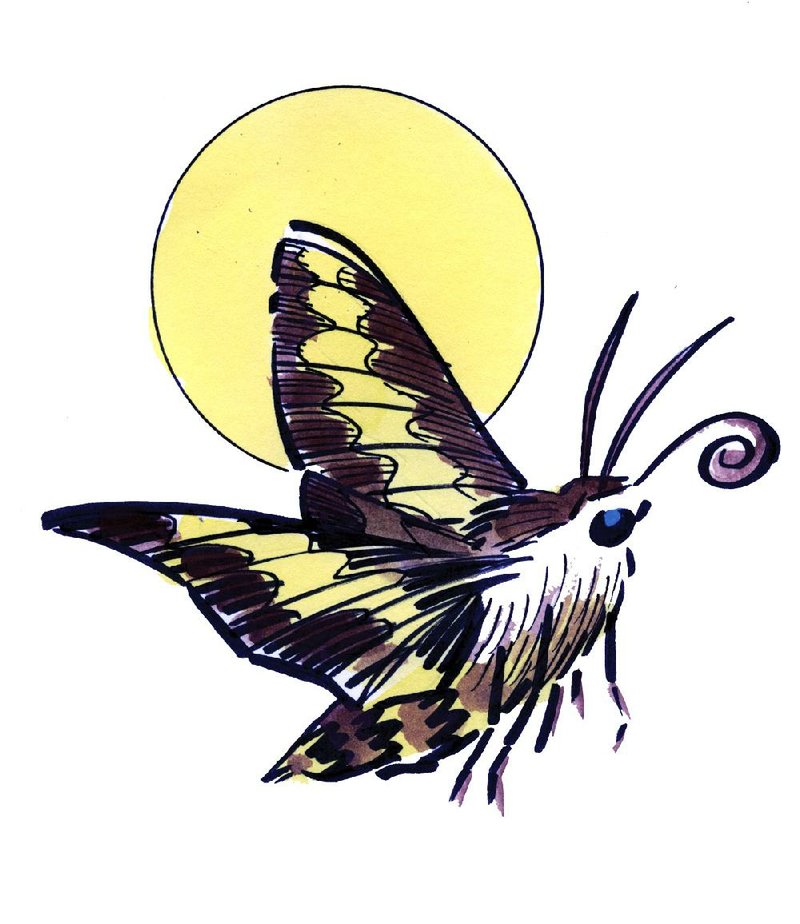Q I saw an unusual flying thing visiting my pentas. It looked like a hummingbird butterfly hybrid. This is the first for me.A The insect in question is commonly called a hawk moth or a hummingbird moth since they hover just like a hummingbird. One member of the family produces the dreaded tomato hornworm, but not this particular one. They are fascinating to watch.Q I bought two climbing roses early this year. One of them has a couple of stems that have shot up without any blooms. The other one is a lot shorter and is blooming. Do you have any ideas why this is happening? I have treated them both the same.
AIt could be that the roses are different varieties. Some climbing roses only bloom once a year,and some bloom nonstop all summer. Regardless of their bloom schedule, climbing roses should be pruned after the first flush of roses in the spring, not before bloom, as we do on regular rose bushes. You also don’t want to judge a flowering plant its first year in theground, since they need time to get established before blooming their best.
QI live in Plainview on Lake Nimrod and we have a dogwood tree that was here when we moved in 25 years ago. We have had only three small blooms, and I am afraid it may have frozen during the past winter with all the ice and snow. Please advise me about how to bring it back. I have considered fertilizer stakes but don’t know if that would help or hinder.
Please help.
AIt is too late to make a change for next spring.
Most dogwoods have already set their flower buds for the next season’s blooms. All you should do now is water when dry to keep it as healthy as possible. Next spring, see how it blooms and spread fertilizer in the yard around the tree - feeder roots can be out in the yard as far away from the trunk as the tree is tall. Water is still the most critical factor for plant success.
QI have a problem that I need your help with. I have a number of beautiful irises, but unfortunately the trees have grown very large and now shade them too much for them to bloom properly. I plan to move them this year. I haven’t cut them back yet because we had so much rain and they seemed to be doing very well.
What I need an answer to is: If I dig them up in the nextcouple of weeks can I then plant them back into new beds? Or do I need to wait until next year to do all this?
Any advice you can give me would be very helpful.
AThe best time to dig and divide is usually July and August, but you don’t want to delay until next year. I would lift, divide and replant your irises as soon as possible. Iris rhizomes need to be planted shallowly - half of the rhizome in the ground, and half exposed above ground.
If you wait too late in the fall to get this done, freezing and thawing of the soil surface can lift the irises. Cutting them back does not have to be done each year unless you have thousands of irises or they have diseases. Mostiris growers cut them back to keep the foliage cleaner and free of diseases, but I think the foliage looks more natural in a garden than the sheared plants do. Do cut back any diseased leaves, but otherwise, leave the foliage.
QI have a question about fertilization. When is the best time to fertilize spring-blooming shrubs, forsythia and lilac, and summer-blooming crape myrtle and rose of Sharon and also spring bulbs like daffodil and tulips, and perennials such as irises, daylilies and astilbe? What about wild roses and trumpet vine?
AIn general, most shrubs benefit from one application of fertilizera year. I typically like to fertilize spring-blooming shrubs after they bloom.
With evergreens such as nandina and holly, and the summer-blooming shrubs, you can fertilize as they start growing in the spring or by early June. I don’t like to fertilize shrubs too late in the season. For spring bulbs, when you see the bloom bud appearing it is a great time to fertilize. That way, the fertilizer can be in the ground and usable when the plants finish flowering. It is the six- to eight-week period after bloom when they set their flowers for next year.
For irises, we usually advise two applications a year - a light application in early spring as they start growing and then immediately after bloom. Astilbe likes a rich site to grow in and ample moisture; it can be fertilized in the spring and once or twice more during the growing season. Daylilies can get by on one application of fertilizer in the spring, or in poor sites, one or two light applications while growing.
Trumpet creeper blooms best in low fertility - too much fertilizer will result in all leaves and no flowers.
Most roses like monthly applications of fertilizer from April to August.
Janet Carson is a horticulture specialist for the University of Arkansas Cooperative Extension Service. Write to her at 2301 S. University Ave., Little Rock, Ark. 72204 or email her at
HomeStyle, Pages 39 on 10/05/2013

